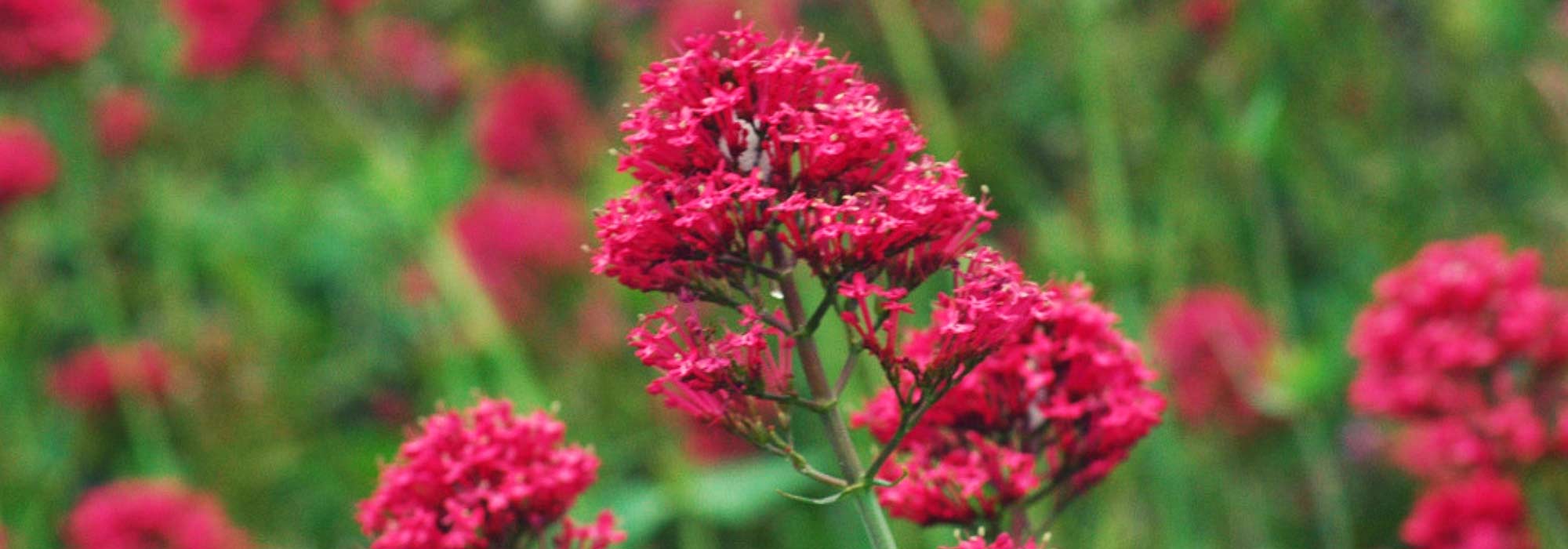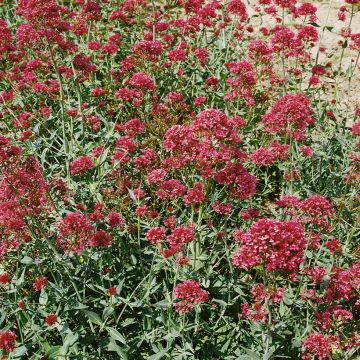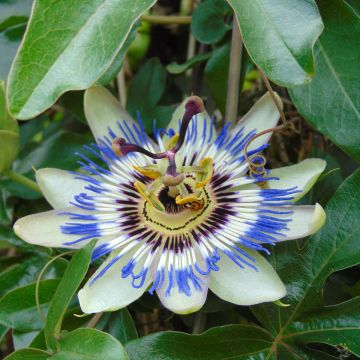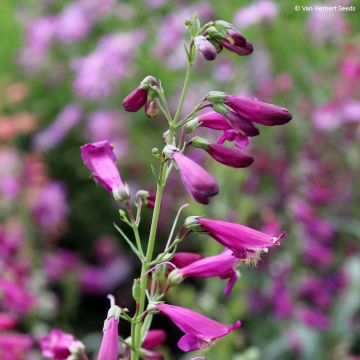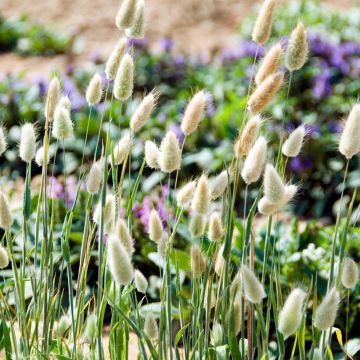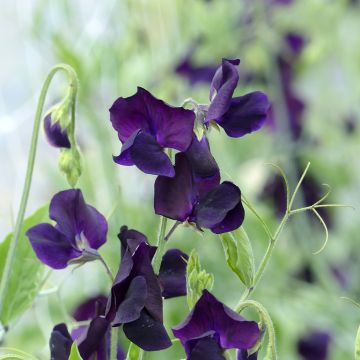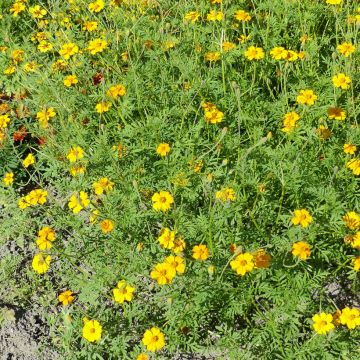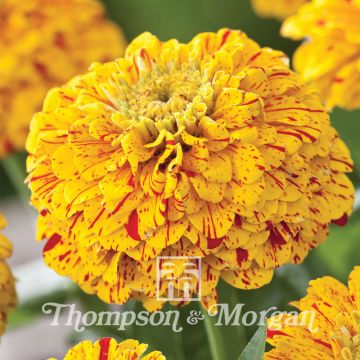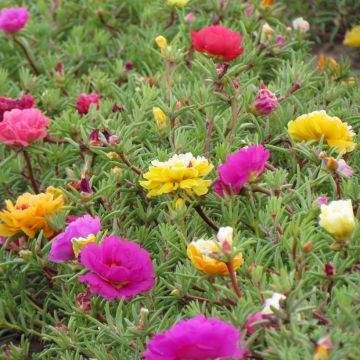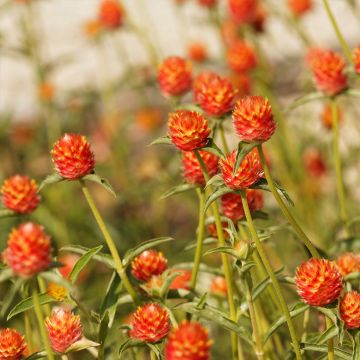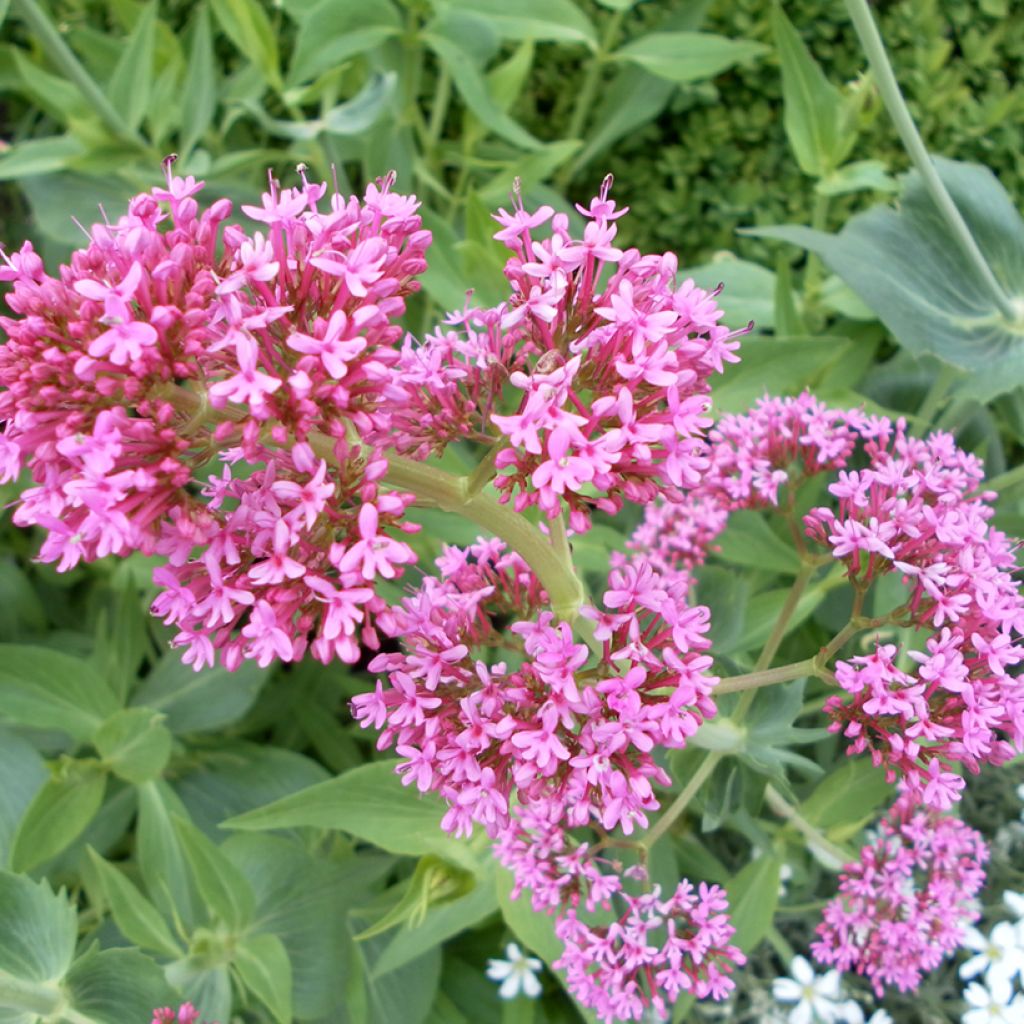

Centranthus ruber Rosato - Red Valerian
Centranthus ruber Rosato - Red Valerian
Centranthus ruber Rosato
Red Valerian, Jupiter's Beard, Spur Valerian
Special offer!
Receive a €20 voucher for any order over €90 (excluding delivery costs, credit notes, and plastic-free options)!
1- Add your favorite plants to your cart.
2- Once you have reached €90, confirm your order (you can even choose the delivery date!).
3- As soon as your order is shipped, you will receive an email containing your voucher code, valid for 3 months (90 days).
Your voucher is unique and can only be used once, for any order with a minimum value of €20, excluding delivery costs.
Can be combined with other current offers, non-divisible and non-refundable.
Home or relay delivery (depending on size and destination)
Schedule delivery date,
and select date in basket
This plant carries a 6 months recovery warranty
More information
We guarantee the quality of our plants for a full growing cycle, and will replace at our expense any plant that fails to recover under normal climatic and planting conditions.
Does this plant fit my garden?
Set up your Plantfit profile →
Description
The Centranthus ruber 'Rosato' is a selection of Garden Valerian that stands out from the classic species with its particularly abundant bright pink flowering. This perennial forms a beautiful clump and blooms profusely for months, even in very dry soil in summer. Its flowering, which resembles small clusters of lilacs from afar, attracts a multitude of butterflies. Almost foolproof, endowed with the untamed character of wild plants, it brings a lot of charm and life to rockeries and flower beds. It self-seeds freely, sometimes even in walls.
Native to Southern Europe, North Africa, and Asia Minor, Garden Valerian has recently been classified in the honeysuckle family (Caprifoliaceae) rather than the valerian family (Valerianaceae). Unlike typical valerians, its tiny flowers have a long arched spur that serves as a nectar reserve for butterflies. It is a herbaceous perennial with a strong woody base anchored on rhizomes. It forms an upright and spreading bushy clump, reaching about 60-70 cm in height and 50 cm in diameter, depending on growing conditions (often taller in fertile soil). The clump consists of hollow, fleshy, and brittle stems covered with a powdery bloom. They bear small deciduous to semi-evergreen leaves in winter, depending on the climate. Thick and fleshy, the leaves are jade green to glaucous green in colour. Sheathing towards the top of the plant, they have petioles towards the base of the clump and are ovate to lanceolate. They do not exceed 2 to 4 cm in length and 1.2 cm in width. Flowering occurs, depending on the region, from May to September-October, sometimes almost year-round in very mild climates. In Mediterranean regions, it slows down in summer and resumes with the return of rain. In the 'Rosato' variety, the tiny flowers, in shades of fresh and vivid pink, are grouped in branched corymbs and are borne on the upper part of the stems, above the foliage. They are highly nectariferous. Note that this perennial plant will live longer in dry and poor soil. It self-seeds naturally in light soils.
The Centranthus ruber 'Rosato' is one of those almost fail-safe perennials that deserve a place in every garden, just like rose campions, gauras, and Erigeron karvinskianus. Highly floriferous and not demanding about soil type as long as it is well-drained, centranthus plants freely evolve in a garden, filling in empty spaces between perennials or shrubs. They even grow spontaneously in wall crevices. These perennials bring a lot of lightness to flower beds and are very useful for quickly filling a poor slope, a rockery, or a brand-new garden. They are excellent plants for dry or Mediterranean gardens, often lacking flowers in summer. Varieties with white, pink, mauve, or red flowers can be planted together to create beautiful colourful masses. They can also be paired with spurges for dry soil, centaureas, poppies, damask daisies, and many others.
Flowering
Foliage
Plant habit
Botanical data
Centranthus
ruber
Rosato
Valerianaceae
Red Valerian, Jupiter's Beard, Spur Valerian
Cultivar or hybrid
Other Centranthus seeds
View all →Planting and care
Sow Valerian from March to June in a seed tray. Use good quality potting soil. Scatter your seeds. Cover the seeds by sprinkling soil on top or using vermiculite, lightly firming it down, and water generously with a fine rain. Place your seed tray in a well-lit area, without direct sunlight, at a temperature of 18°C to 20°C.
The seeds will germinate in 21 to 30 days. Once the seedlings have reached a height of 5 cm, transplant them into buckets. 15 days before their final planting, start gradually acclimatising them to a temperature of 15°C.
By the end of May or early June, the temperature in the garden will be warm enough to plant your young plants. Choose a sunny location with well-drained soil. Space your plants 30 cm apart.
Regularly remove faded flowers to promote continuous flowering.
In Mediterranean climates, you can sow directly in place in late summer or early autumn.
Sowing period
Intended location
Planting & care advice
This item has not been reviewed yet - be the first to leave a review about it.
Similar products
Haven't found what you were looking for?
Hardiness is the lowest winter temperature a plant can endure without suffering serious damage or even dying. However, hardiness is affected by location (a sheltered area, such as a patio), protection (winter cover) and soil type (hardiness is improved by well-drained soil).

Photo Sharing Terms & Conditions
In order to encourage gardeners to interact and share their experiences, Promesse de fleurs offers various media enabling content to be uploaded onto its Site - in particular via the ‘Photo sharing’ module.
The User agrees to refrain from:
- Posting any content that is illegal, prejudicial, insulting, racist, inciteful to hatred, revisionist, contrary to public decency, that infringes on privacy or on the privacy rights of third parties, in particular the publicity rights of persons and goods, intellectual property rights, or the right to privacy.
- Submitting content on behalf of a third party;
- Impersonate the identity of a third party and/or publish any personal information about a third party;
In general, the User undertakes to refrain from any unethical behaviour.
All Content (in particular text, comments, files, images, photos, videos, creative works, etc.), which may be subject to property or intellectual property rights, image or other private rights, shall remain the property of the User, subject to the limited rights granted by the terms of the licence granted by Promesse de fleurs as stated below. Users are at liberty to publish or not to publish such Content on the Site, notably via the ‘Photo Sharing’ facility, and accept that this Content shall be made public and freely accessible, notably on the Internet.
Users further acknowledge, undertake to have ,and guarantee that they hold all necessary rights and permissions to publish such material on the Site, in particular with regard to the legislation in force pertaining to any privacy, property, intellectual property, image, or contractual rights, or rights of any other nature. By publishing such Content on the Site, Users acknowledge accepting full liability as publishers of the Content within the meaning of the law, and grant Promesse de fleurs, free of charge, an inclusive, worldwide licence for the said Content for the entire duration of its publication, including all reproduction, representation, up/downloading, displaying, performing, transmission, and storage rights.
Users also grant permission for their name to be linked to the Content and accept that this link may not always be made available.
By engaging in posting material, Users consent to their Content becoming automatically accessible on the Internet, in particular on other sites and/or blogs and/or web pages of the Promesse de fleurs site, including in particular social pages and the Promesse de fleurs catalogue.
Users may secure the removal of entrusted content free of charge by issuing a simple request via our contact form.
The flowering period indicated on our website applies to countries and regions located in USDA zone 8 (France, the United Kingdom, Ireland, the Netherlands, etc.)
It will vary according to where you live:
- In zones 9 to 10 (Italy, Spain, Greece, etc.), flowering will occur about 2 to 4 weeks earlier.
- In zones 6 to 7 (Germany, Poland, Slovenia, and lower mountainous regions), flowering will be delayed by 2 to 3 weeks.
- In zone 5 (Central Europe, Scandinavia), blooming will be delayed by 3 to 5 weeks.
In temperate climates, pruning of spring-flowering shrubs (forsythia, spireas, etc.) should be done just after flowering.
Pruning of summer-flowering shrubs (Indian Lilac, Perovskia, etc.) can be done in winter or spring.
In cold regions as well as with frost-sensitive plants, avoid pruning too early when severe frosts may still occur.
The planting period indicated on our website applies to countries and regions located in USDA zone 8 (France, United Kingdom, Ireland, Netherlands).
It will vary according to where you live:
- In Mediterranean zones (Marseille, Madrid, Milan, etc.), autumn and winter are the best planting periods.
- In continental zones (Strasbourg, Munich, Vienna, etc.), delay planting by 2 to 3 weeks in spring and bring it forward by 2 to 4 weeks in autumn.
- In mountainous regions (the Alps, Pyrenees, Carpathians, etc.), it is best to plant in late spring (May-June) or late summer (August-September).
The harvesting period indicated on our website applies to countries and regions in USDA zone 8 (France, England, Ireland, the Netherlands).
In colder areas (Scandinavia, Poland, Austria...) fruit and vegetable harvests are likely to be delayed by 3-4 weeks.
In warmer areas (Italy, Spain, Greece, etc.), harvesting will probably take place earlier, depending on weather conditions.
The sowing periods indicated on our website apply to countries and regions within USDA Zone 8 (France, UK, Ireland, Netherlands).
In colder areas (Scandinavia, Poland, Austria...), delay any outdoor sowing by 3-4 weeks, or sow under glass.
In warmer climes (Italy, Spain, Greece, etc.), bring outdoor sowing forward by a few weeks.






























